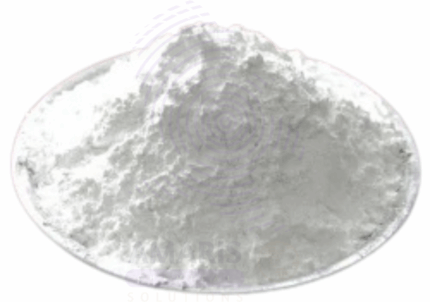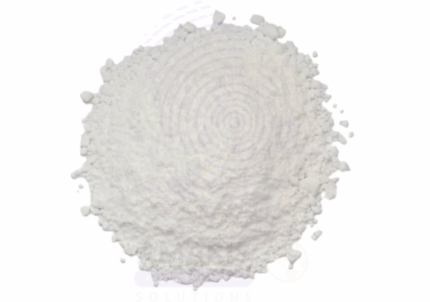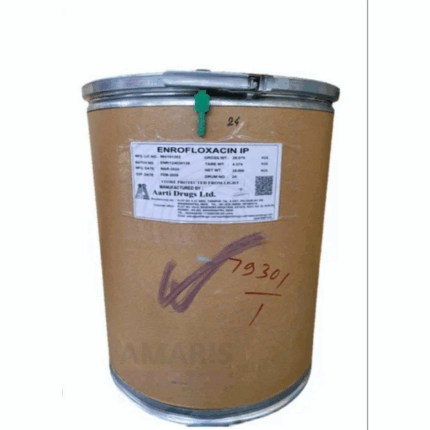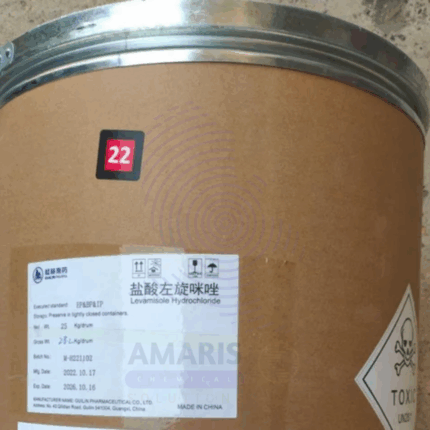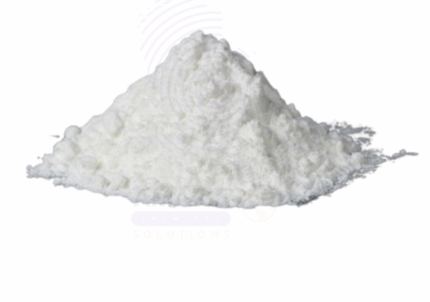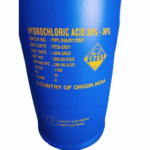
Hydrocortisone Acetate
Hydrocortisone Acetate is a synthetic corticosteroid ester derived from hydrocortisone (cortisol). It is a white to off-white crystalline powder, practically insoluble in water but soluble in alcohol and acetone. This compound exhibits potent anti-inflammatory, immunosuppressive, and anti-allergic properties, making it widely used in pharmaceutical and dermatological formulations. Hydrocortisone Acetate acts by modulating gene expression to reduce the production of inflammatory mediators, thereby alleviating symptoms in various inflammatory and autoimmune conditions.
Hydrocortisone Acetate
Primary Uses
- Pharmaceutical and Medical
- Used extensively as an active pharmaceutical ingredient (API) in topical formulations (creams, ointments, lotions) for treating skin disorders such as eczema, psoriasis, dermatitis, and allergic reactions.
- Applied in injectable formulations for systemic anti-inflammatory and immunosuppressive therapy.
- Incorporated into ophthalmic preparations for managing eye inflammations.
- Utilized in intramuscular or intralesional injections to treat localized inflammation and autoimmune diseases.
- Plays a role in replacement therapy for adrenal insufficiency and certain endocrine disorders.
- Veterinary Medicine
- Used similarly in veterinary formulations to treat inflammatory and allergic conditions in animals.
Secondary Uses
- Cosmetic Industry
- Occasionally incorporated into dermatological cosmetic formulations for anti-inflammatory benefits in sensitive or problem skin products (with strict regulatory limits).
- Biomedical Research
- Utilized in experimental models to study inflammation, immune responses, and corticosteroid pharmacodynamics.
- Used to investigate corticosteroid receptor interactions and gene expression pathways.
- Combination Formulations
- Combined with antibiotics, antifungals, or antiseptics in multi-action topical products for enhanced therapeutic effects.
1. Basic Identification Attributes
- Chemical Name (IUPAC): (11β)-11,17,21-Trihydroxypregn-4-ene-3,20-dione 21-acetate
- Common/Trade Name: Hydrocortisone Acetate
- CAS Number: 50-03-3
- HS Code: 2937.29.00
- Molecular Formula: C23H32O6
- Synonyms: Cortisol acetate; Hydrocortisone 21-acetate; 11β,17α,21-Trihydroxypregn-4-ene-3,20-dione 21-acetate
2. Physical & Chemical Properties
- Physical State: Crystalline powder
- Color & Odor: White to off-white; odorless or faint odor
- Melting Point: 220–225 °C (decomposes)
- Solubility: Practically insoluble in water; soluble in ethanol, acetone, and chloroform
- Stability: Stable under recommended storage, sensitive to light and moisture
3. Safety & Hazard Attributes
- GHS Classification: Not classified as hazardous under normal handling; potential irritant
- Toxicity: Low acute toxicity; long-term use may cause systemic corticosteroid effects
- Exposure Limits: No specific occupational limits, but good industrial hygiene is recommended
4. Storage & Handling Attributes
- Container Type: Airtight, moisture-proof containers (glass or high-density polyethylene)
- Storage Conditions: Store in a cool, dry, dark place, away from heat and direct sunlight
- Shelf Life: Typically 24 months under recommended storage conditions
- Handling Notes: Avoid inhalation of dust; use in well-ventilated areas
5. Regulatory & Compliance Attributes
- Approved for pharmaceutical use globally (FDA, EMA, WHO monographs)
- Controlled substance regulations vary by country due to corticosteroid properties
- Usage strictly regulated in cosmetics due to potency and side effect profile
6. Environmental & Health Impact
- Biodegradability: Expected to degrade in environment, but slow due to steroid structure
- Ecotoxicity: Potential endocrine disruptor; should be managed to avoid environmental contamination
- Bioaccumulation: Not expected significantly
- Carcinogenicity/Mutagenicity: Not classified as carcinogenic
Safety Handling Precautions
- PPE Required: Gloves, dust mask, protective eyewear if handling powder
- Handling Guidelines: Use in well-ventilated areas, avoid generating dust, prevent skin and eye contact
- Hygiene Practices: Wash hands after handling; avoid eating or smoking during use
First Aid Measures
- Inhalation: Move to fresh air; seek medical advice if symptoms develop
- Skin Contact: Wash thoroughly with soap and water; seek medical attention if irritation occurs
- Eye Contact: Rinse eyes with plenty of water for at least 15 minutes; consult a doctor if irritation persists
- Ingestion: Rinse mouth; seek medical attention for significant ingestion
Firefighting Measures
- Fire Hazards: Combustible powder; emits toxic fumes including CO, CO₂, and other combustion products
- Extinguishing Media: Water spray, foam, dry chemical, or CO₂
- Special Precautions: Firefighters should wear protective equipment and self-contained breathing apparatus
- Decomposition Products: Carbon oxides, steroid fragments
Related products
Chlorpheniramine Maleate
Clotrimazole BP2000
Diphenhydramine HCL BP
Enrofloxacin Hydrochloride
Levamisole Hcl BP2000
Lidocaine HCL BP
Methyl Salicylate BP
Miconazole Nitrate BP
Miconazole Nitrate BP is a high-purity, pharmaceutical-grade antifungal agent conforming to British Pharmacopoeia (BP) specifications. It is widely used in the formulation of topical and oral pharmaceutical products for the treatment of fungal infections caused by dermatophytes and yeasts, including Candida species. Miconazole Nitrate functions by inhibiting the biosynthesis of ergosterol, a vital component of fungal cell membranes, leading to cell death.
This white to off-white crystalline powder is highly effective and exhibits broad-spectrum antifungal and some antibacterial activity. It is commonly utilized in creams, ointments, powders, and gel formulations.


 Preservatives(food)
Preservatives(food) Flavor Enhancers
Flavor Enhancers Acidulants
Acidulants Sweeteners
Sweeteners Antioxidants
Antioxidants Colorants(food)
Colorants(food) Nutraceutical Ingredients (food)
Nutraceutical Ingredients (food) Nutrient Supplements
Nutrient Supplements Emulsifiers
Emulsifiers
 Collectors
Collectors Dust Suppressants
Dust Suppressants Explosives and Blasting Agents
Explosives and Blasting Agents Flocculants and Coagulants
Flocculants and Coagulants Frothers
Frothers Leaching Agents
Leaching Agents pH Modifiers
pH Modifiers Precious Metal Extraction Agents
Precious Metal Extraction Agents
 Antioxidants(plastic)
Antioxidants(plastic) Colorants (Pigments, Dyes)
Colorants (Pigments, Dyes) Fillers and Reinforcements
Fillers and Reinforcements Flame Retardants
Flame Retardants Monomers
Monomers Plasticizers
Plasticizers Polymerization Initiators
Polymerization Initiators Stabilizers (UV, Heat)
Stabilizers (UV, Heat)
 Antifoaming Agents
Antifoaming Agents Chelating Agents
Chelating Agents Coagulants and Flocculants
Coagulants and Flocculants Corrosion Inhibitors
Corrosion Inhibitors Disinfectants and Biocides
Disinfectants and Biocides Oxidizing Agents
Oxidizing Agents pH Adjusters
pH Adjusters Scale Inhibitors( water)
Scale Inhibitors( water)
 Antioxidants(cosmetic)
Antioxidants(cosmetic) Emollients
Emollients Fragrances and Essential Oils
Fragrances and Essential Oils Humectants
Humectants Preservatives
Preservatives Surfactants(cosmetic)
Surfactants(cosmetic) Thickeners
Thickeners UV Filters
UV Filters
 Fertilizers
Fertilizers Soil Conditioners
Soil Conditioners Plant Growth Regulators
Plant Growth Regulators Animal Feed Additives
Animal Feed Additives Biostimulants
Biostimulants Pesticides (Herbicides, Insecticides, Fungicides)
Pesticides (Herbicides, Insecticides, Fungicides)
 Active Pharmaceutical Ingredients (APIs)
Active Pharmaceutical Ingredients (APIs) Excipients
Excipients Solvents(pharmaceutical)
Solvents(pharmaceutical) Antibiotics
Antibiotics Antiseptics and Disinfectants
Antiseptics and Disinfectants Vaccine Adjuvants
Vaccine Adjuvants Nutraceutical Ingredients (pharmaceutical)
Nutraceutical Ingredients (pharmaceutical) Analgesics & Antipyretics
Analgesics & Antipyretics
 Analytical Reagents
Analytical Reagents Solvents(lab)
Solvents(lab) Chromatography Chemicals
Chromatography Chemicals Spectroscopy Reagents
Spectroscopy Reagents microbiology-and-cell-culture-reagents
microbiology-and-cell-culture-reagents Molecular Biology Reagents
Molecular Biology Reagents Biochemical Reagents
Biochemical Reagents Inorganic and Organic Standards
Inorganic and Organic Standards Laboratory Safety Chemicals
Laboratory Safety Chemicals Specialty Laboratory Chemicals(Special Laboratory Equipment)
Specialty Laboratory Chemicals(Special Laboratory Equipment)
 Demulsifiers
Demulsifiers Hydraulic Fracturing Fluids
Hydraulic Fracturing Fluids Scale Inhibitors(oil)
Scale Inhibitors(oil) Surfactants(oil)
Surfactants(oil) Drilling Fluids
Drilling Fluids
 Dyes and Pigments
Dyes and Pigments Bleaching Agents
Bleaching Agents Softening Agents
Softening Agents Finishing Agents
Finishing Agents Antistatic Agents
Antistatic Agents
 Admixtures
Admixtures Waterproofing Agents
Waterproofing Agents Sealants and Adhesives
Sealants and Adhesives Curing Compounds
Curing Compounds Concrete Repair Chemicals
Concrete Repair Chemicals Anti-Corrosion Coatings
Anti-Corrosion Coatings
 Surfactants(cleaning)
Surfactants(cleaning) Builders
Builders Enzymes
Enzymes Solvents (Cleaning)
Solvents (Cleaning) Fragrances
Fragrances
 Electronic Chemicals
Electronic Chemicals Catalysts
Catalysts Lubricants
Lubricants Photographic Chemicals
Photographic Chemicals Refrigerants
Refrigerants Automotive chemicals
Automotive chemicals Pyrotechnic Chemicals
Pyrotechnic Chemicals
 Biodegradable Surfactants
Biodegradable Surfactants Bio-based Solvents
Bio-based Solvents Renewable Polymers
Renewable Polymers Carbon Capture Chemicals
Carbon Capture Chemicals Wastewater Treatment Chemicals
Wastewater Treatment Chemicals
 Pigments
Pigments Solvents(paint)
Solvents(paint) Specialty Coatings
Specialty Coatings Binders/Resins
Binders/Resins Additives
Additives Driers
Driers Anti-Corrosion Agents
Anti-Corrosion Agents Functional Coatings
Functional Coatings Application-Specific Coatings
Application-Specific Coatings
 Fresh Herbs
Fresh Herbs Ground Spices
Ground Spices Whole Spices
Whole Spices Spice Blends
Spice Blends Dried Herbs
Dried Herbs
 Leavening Agents
Leavening Agents Dough Conditioners
Dough Conditioners Flour Treatments
Flour Treatments Fat Replacers
Fat Replacers Decoratives
Decoratives Preservatives(baking)
Preservatives(baking)
 Plasticizers & Softeners
Plasticizers & Softeners Reinforcing Agents
Reinforcing Agents Adhesion Promoters
Adhesion Promoters Vulcanizing Agents
Vulcanizing Agents Antidegradants
Antidegradants Blowing Agents
Blowing Agents Fillers & Extenders
Fillers & Extenders Accelerators & Retarders
Accelerators & Retarders


